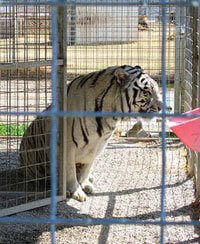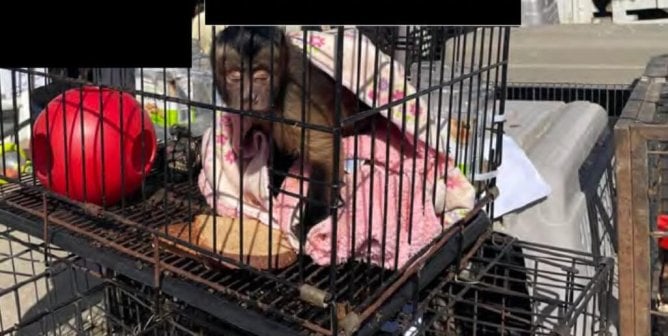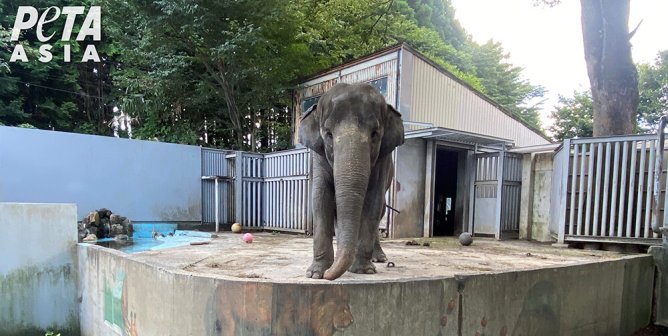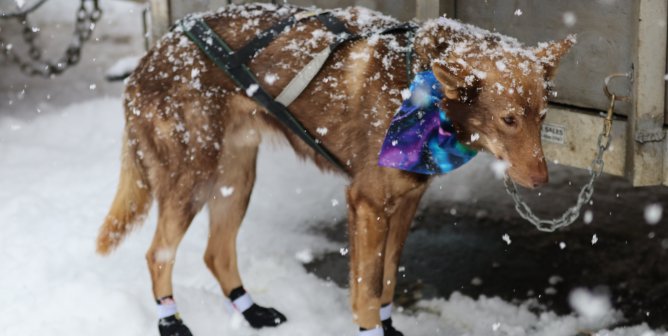Roadside Zoos and Other Captive-Animal Displays
Scam Shelters
The number of roadside zoos that have tacked on the word “sanctuary” or “rescue” to their names has skyrocketed in recent years. Kind people are naturally drawn to places that claim to rescue animals and offer them sanctuary, but many of these outfits are nothing more than breeders, dealers, and exhibitors exploiting the public’s goodwill and generosity.
The fundamental purpose of any legitimate animal sanctuary is to provide animals with safe, comfortable living conditions that give them as natural an existence as captivity allows. No legitimate animal sanctuary breeds or sells animals. No reputable exotic-animal sanctuary allows any kind of “hands-on” interaction, and that includes taking photos with animals or taking them out on the road for public display.
Drive-Through Safaris
Whether a facility is called a “safari park,” a “drive-through wildlife preserve,” or a “game park,” more space does not necessarily mean better conditions for animals. Animals have suffered from leg fractures after being crushed under guest wagons, they often are not provided with appropriate shelter from inclement weather, and ailing and wounded animals have been denied adequate veterinary care.
Many drive-through safaris or wildlife parks breed animals continuously, because a large collection of animals attract customers. But babies grow up quickly, and older, unwanted animals may be warehoused like inventory or quietly shipped out. Since paper trails are notoriously inaccurate and difficult to follow, it’s nearly impossible to know how many “surplus” animals end up at exotic-animal auctions, in slaughterhouses, or on hunting ranches.
When your family hits the road, instead of going to a wildlife park or drive-through safari, visit one of the great national parks around the country, where everyone—both human and nonhuman—can enjoy the freedom of nature.
Traveling and Petting Zoos
Animals used in traveling zoos are subjected to the stresses of transport, strange and frightening environments, irregular feeding and watering, mishandling, and extensive public contact. The sheer logistics of getting from one venue to the next does not allow for much downtime to let animals rest or exercise or to enable caretakers to attend to sick or injured animals. It’s impossible to know how many animals suffer and die en route, because zoo caravans are constantly on the move, and for the most part, no one is watching. The U.S. Department of Agriculture (USDA) oversees animal displays, but with just over 100 officers responsible for inspecting more than 8,600 licensees, it’s impossible for the USDA to monitor all exhibitors adequately.
Forced to interact with crowds of people all day long, animals used in petting zoos may not get enough food, water, and rest. Some snap. Many children and adults have been seriously injured by tigers, primates, and other animals who are used as props in photo shoots.
Petting zoos are hotbeds of E. coli bacteria, and numerous children have been infected with the potentially deadly bug after visiting such displays. Infections can spread through direct animal contact or mere touching of the surroundings near an animal exhibit.
What You Can Do
Don’t pass a few hours at a place where animals will languish in misery long after you’ve gone home. Please don’t buy a ticket. Instead, explain to your children why your family does not support cruelty to animals.
People can support rescue operations affiliated with the Global Federation of Animal Sanctuaries (GFAS). GFAS is an organization that upholds rigorous standards of sanctuary management and animal care. Member sanctuaries don’t breed or use animals in commercial activities, and they provide excellent lifetime care.
 Animals in roadside zoos, pseudo-sanctuaries, and traveling shows or displays are forced to spend their lives behind bars just to entertain the public. Living conditions are often dismal, with animals confined to tiny, filthy, barren enclosures. These environments can’t come close to matching the space, diversity, and freedom that animals want and need. This deprivation—combined with relentless boredom, loneliness, and sometimes even abuse from the people who are supposed to be caring for them—causes many captive animals to lose their minds. Animals suffering from psychological distress often rock, sway, or pace endlessly, and some even resort to hurting themselves by chewing on their own fingers or limbs or pulling out their fur or feathers.
Animals in roadside zoos, pseudo-sanctuaries, and traveling shows or displays are forced to spend their lives behind bars just to entertain the public. Living conditions are often dismal, with animals confined to tiny, filthy, barren enclosures. These environments can’t come close to matching the space, diversity, and freedom that animals want and need. This deprivation—combined with relentless boredom, loneliness, and sometimes even abuse from the people who are supposed to be caring for them—causes many captive animals to lose their minds. Animals suffering from psychological distress often rock, sway, or pace endlessly, and some even resort to hurting themselves by chewing on their own fingers or limbs or pulling out their fur or feathers.






